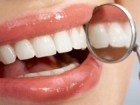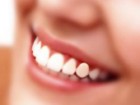Teeth whitening
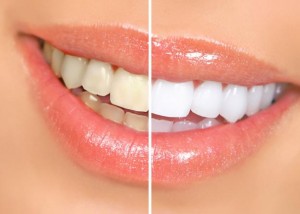
In accordance with modern standards, one of the signs of beauty is the presence of a snow-white smile.
The teeth whitening procedure has always been popular. Previously, teeth were whitened using folk methods.
Currently, there are many methods of professional teeth whitening, not only in the dentist’s office, but also at home.
Causes of enamel color change
The fact that in nature there are no perfectly white teeth is not a secret.
For one reason or another, the color of the enamel can have a yellowish, gray or blue tint.
The shade of enamel is individual for each person and is often genetically determined.
The color of the teeth may depend on a number of reasons, among which the most common are:
- Smoking, which leads to the fact that the substances contained in tobacco smoke, are introduced into the tooth enamel and change its shade.
- Excessive consumption of carbohydrates leads to the multiplication of bacteria in the oral cavity, the vital products of which lead to the thinning of enamel and its subsequent destruction. As a result, dentin shines through the enamel, which is naturally yellow in color, and the teeth acquire additional yellowness.
- The use of drinks containing food coloring helps stain the enamel; as a result, the teeth turn brown.
- When treating with large doses of tetracycline in childhood or when a pregnant woman takes it during the formation of the rudiments of the teeth of the fetus, the teeth become pathological yellowness.
- Spotting on the teeth (fluorosis) with excessive intake of fluoride.
- With enamel hypoplasia, yellowish or white spots also form.
When lightening is not recommended
Bleaching procedures should be discarded in the following cases:
- If there is an increased sensitivity of enamel.
- The presence of fillings on the front surface of the teeth. The filling material does not bleach and will become more noticeable.
- If you are allergic to any of the whitening ingredients.
- During pregnancy and breastfeeding.
- While taking certain medications.
- Under the age of 18.
- The presence of periodontal disease.
Is it harmful to whiten teeth
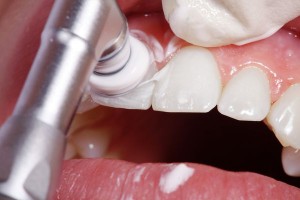
The bleaching procedure is very similar to bleaching hair and therefore may not be useful.
In this regard, one of the tasks of whitening is to minimize the side effects of the procedure.
- Before you use whitening products at home, you must go through a dentist examination and get recommendations for teeth whitening. Otherwise, you can not only not get the desired result, but also harm your health.
- If there are fillings on the teeth, it is necessary to revise them.Over time, gaps may form between the tooth tissue and the filling, through which aggressive substances can penetrate and cause tooth decay from the inside.
- After the bleaching procedure, it is necessary to refrain from taking colored drinks and smoking.
- To maintain the effect after cabinet whitening, it is recommended to use whitening pastes.
- After bleaching at home, in order to prolong the effect, it is recommended to repeat the lightening of the teeth after several months.
Kinds
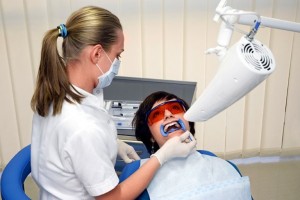
Today, all types of teeth whitening are divided into:
- Professional whitening is carried out by a dentist in a clinical setting or by a patient independently under medical supervision. These include photo-bleaching, chemical and laser bleaching, intra-channel, as well as home using cap.
- Unprofessional whitening is carried out using whitening preparations that are sold in pharmacies or other accessible places. Whitening is carried out at home without the participation of a dentist. This is not only about whitening pastes, but also plates, pencils, systems with universal mouthguards.
Home Ways
At home, you can carry out professional tooth brightening with:
- Teeth whitening strips. They are applied to the teeth and left for thirty minutes. After a month, the teeth brighten in two to six tones (depending on the manufacturer).
- Use of whitening gel. At home, a special whitening gel is applied to the surface of the teeth. After a while, it is washed off.
- The use of mouthguards is a type of gel whitening. The free space is filled with gel and the mouthpiece is worn on the teeth. The design objective is to prevent the product from getting onto the mucous membranes.
- Using a whitening pencil is a form of gel brightening. Using a special brush, which is equipped with a pencil, the gel is applied to the tooth enamel. Due to the fact that the concentration of the active substance in the pencils is low and it is possible to cope only with changes in the color of the teeth associated with smoking and taking colored drinks. Therefore, its effect is mainly in maintaining the whiteness of the teeth.
There are folk methods for whitening enamel, with which you can lighten your teeth by one or two tones.
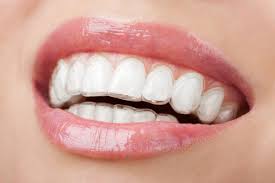
Most popular ways:
- The use of hydrogen peroxide is one of the most affordable bleaching methods. The procedure is very simple and allows you to make the smile snow-white in a short time. But, if you use a concentrated peroxide solution and often use this method, you can not only damage the tooth enamel, but also get a gum burn.
- A safer method is the use of tea tree oil, which allows you to not only remove old plaque from your teeth, but also get rid of tartar.
- Enamel brightening with soda is a mechanical way to remove plaque from teeth. The disadvantages of this method are damage to the enamel and gums.
- Activated carbon teeth whitening. As a result of lightening, tooth enamel can be damaged, so it should be used very carefully and no more than two to three times a month.
- Use as a bleach of lemon juice. Just do not use lemon for whitening too often, especially if there is an increased sensitivity of the teeth.
Video: “How to whiten your teeth at home? 5 best ways! ”
Side effect
Before brightening the teeth, you need to know the exact cause of the change in their shade.
- If the teeth are yellowness, then whitening can give certain results.
- If there is a gray or brown tint, the cause is often hidden inside. The results of clarification in this case may be unpredictable.
To make the smile snow-white and not harm health, before the start of whitening, about a month later, a set of measures should be taken to strengthen the enamel.
It is necessary to include foods rich in calcium and fluoride in the diet, take vitamin complexes, and also start using toothpaste containing fluoride.
With the unsystematic use of aggressive bleaching agents at home, the following complications may develop:
- Bleeding gums.
- Periodontal inflammation.
- Increased tooth sensitivity.
- Thinning and destruction of enamel.
It should be noted that modern dentistry has a negative attitude to home whitening.
And this is connected not only with the fact that it is impossible to achieve the desired effect using these methods. As a result of using home whitening products, there is a high probability of developing complications.
Therefore, with self-whitening of teeth, it is important to be careful and to minimize the frequency of the whitening effect of various products on tooth enamel.
Video: “Criteria for quality teeth whitening”


